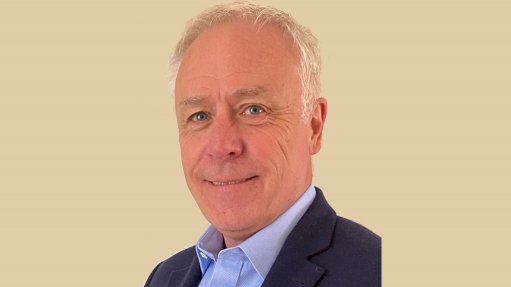
Kevin Fothergill
Green ammonia can be used to transport green hydrogen from the source of production to the end-user in a cost efficient manner and, owing to its endowment of natural resources, South Africa is ideally positioned to become a major international player in this industry, fuel cell components manufacturer Isondo Precious Metals technical adviser Kevin Fothergill says.
He was speaking during the 'Positioning South Africa for the Green Economy – Execution Strategies' webinar on July 16, which was co-hosted by the Department of Trade, Industry and Competition (DTIC) and Isondo.
Fothergill went on to say that there needs to be a detailed understanding of the specifics of the opportunity for green hydrogen in South Africa, so that technologies that capitalise on the country’s natural strengths and meet the needs of its people can be deployed.
However, he cautioned that whatever is done by way of demonstration must be financially viable and that these demonstration projects must lead on to bigger projects.
“There is an enormous global opportunity for green hydrogen in which South Africa can participate and the time is right for South Africa to take part and realise the potential of its natural resources,” Fothergill enthused.
Solar and wind, via the electrolysis of water, can be used to produce green hydrogen which can be used to help decarbonise several industries including steel, chemicals and transportation.
Green hydrogen can also be used to store intermittent renewable energy over very long periods, more effectively than other technologies, such as batteries.
Fothergill outlined some of the economic and technical challenges of transporting gaseous hydrogen over long distances, including the significant energy needed to compress the hydrogen.
However, he noted that one solution to this problem is converting the green hydrogen into green ammonia and then transporting the ammonia to the end-user. Millions of tonnes a year of ammonia are already safely and efficiently transported around the globe.
“Green ammonia provides an opportunity for South Africa to transport its renewable energy by road, sea and rail around South Africa, into greater Africa and to the world,” emphasised Fothergill.
To convert the green ammonia back to hydrogen requires an ammonia cracker, which presents a further opportunity for South Africa.
A new ammonia cracking plant that is being trialled in the UK requires a novel ruthenium catalyst, as well as platinum oxidation catalysts, both of which can be manufactured in South Africa by Isondo at its facility, which is being built in the OR Tambo Special Economic Zone, in Gauteng.
Isondo, together with its partner companies, has developed a hydrogen refuelling station ‘proof of concept’ to help accelerate the deployment of fuel cell electric cars and buses, which includes the demonstration of green ammonia within the transportation fuelling value chain.
Eventually, the electrolyser, fuel cell and ammonia cracking technologies will use membrane electrode assemblies and platinum group metal catalysts from Isondo’s manufacturing facility, thereby increasing localisation of South African technologies into the supply chain.
“Isondo is getting into the market in South Africa and starting to develop these things for real and it is only by getting on the ground and learning by doing that we can really take this forward,” concluded Fothergill.